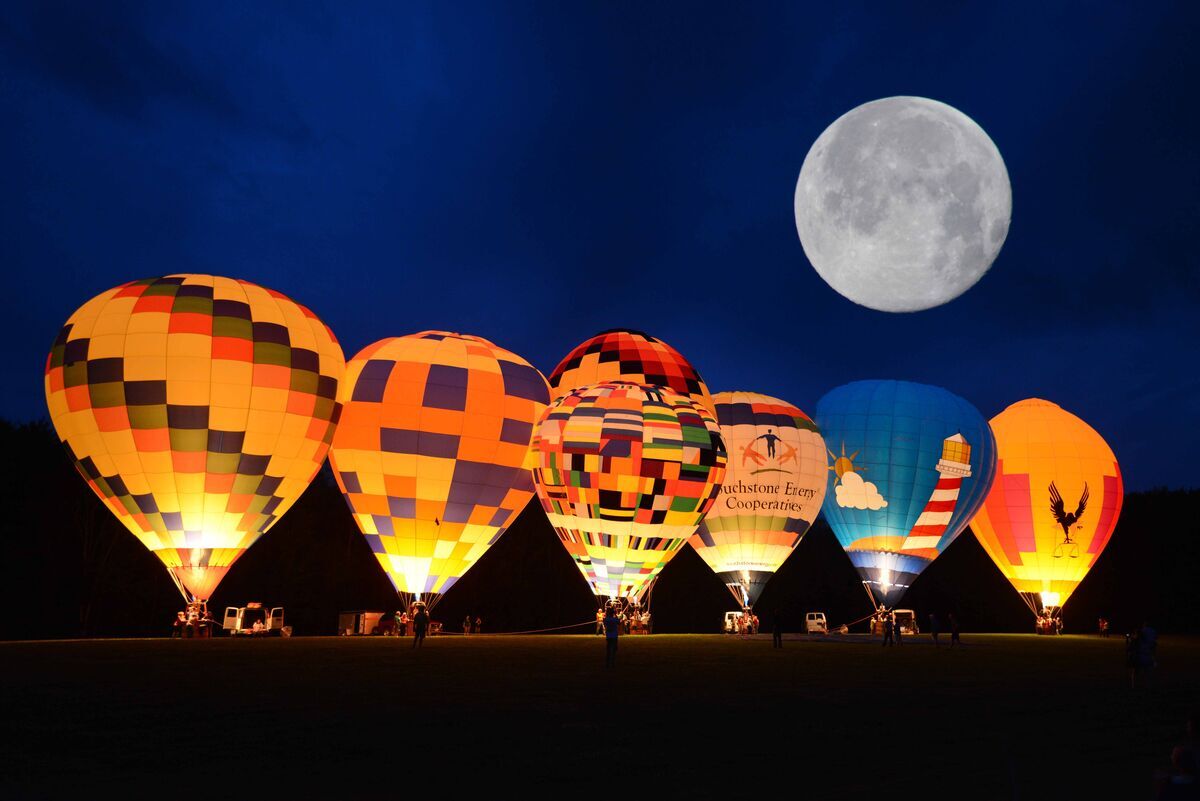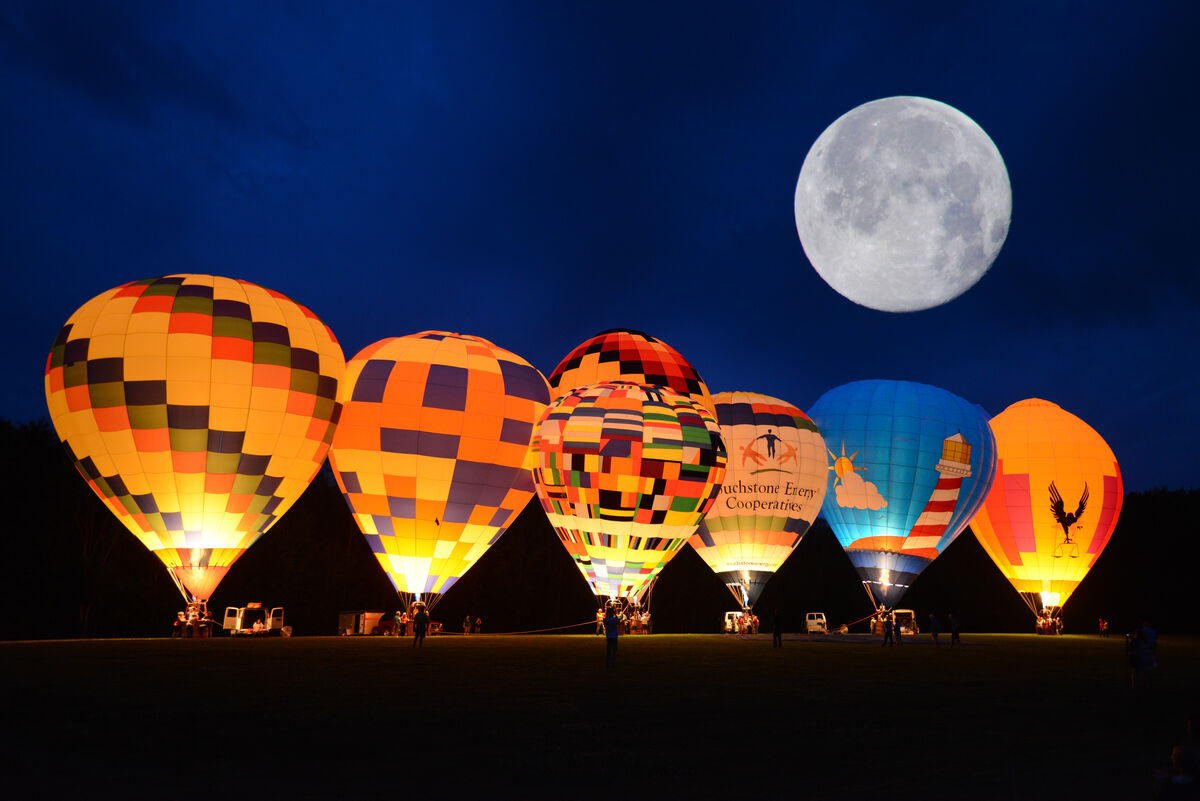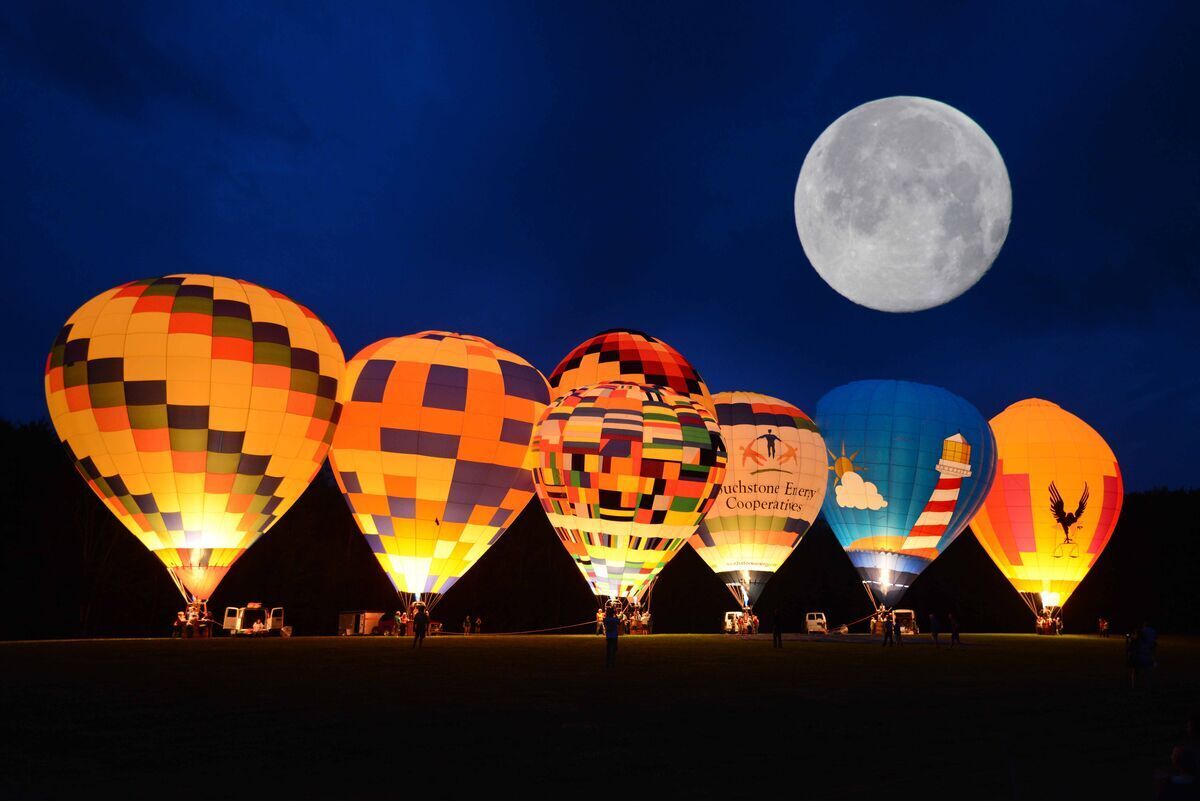Anyone have an idea how to take this photo
Oct 29, 2023 09:58:54 #
StanMac
Loc: Tennessee
Simple. Select and copy the well exposed moon from its frame and paste it as an overlay on the moon in the frame with the visible golf course imagery.
Stan
Stan
Oct 29, 2023 10:08:49 #
I agree with all those that say you properly expose the foreground and maybe even the midground to it's own exposure and then the moon and blend the two or three images together. It's similar to HDR but I find you get more control and less noise when taking separate images and blending the areas that you want in a properly exposed image across the entire scene.
Mike
Mike
Oct 29, 2023 11:39:12 #
Have you tried light painting the foreground? Set a several second delay for the shutter, expose for the moon and then use a strong flashlight to paint the trees.
Oct 29, 2023 11:41:56 #
scsdesphotography wrote:
Have you tried light painting the foreground? Set a several second delay for the shutter, expose for the moon and then use a strong flashlight to paint the trees.
I don't have a strong enough flashlight. I did that with the ship photo I included, but the trees are just too far away. It would be cool to mount lights at the tree level, but that would be too costly for me.
Oct 29, 2023 11:45:52 #
You have two challenges facing you:
1 Exposure for the moon requires "daylight" settings as the moon is reflected sunlight. Exposure for landscape features requires a different exposure based on "ambient light" present and how much detail you want revealed.
2. Lens to show the moon requires a much longer focal length than the lens to show the landscape features. On a full frame sensor camera the focal length for the moon could require 300mm to 700mm depending on how big you wanted the moon to be in the image. The landscape features might require a focal length of 24m to 50mm.
My solution using my Nikon cameras is to set Multiple Exposure and make two separate exposures and let the camera blend them into one. I can do this on a D800e, D500, D850, Z9. Using a tripod, and Multipole Exposure, the moon exposure might be ISO 200, f11, 1/200 with a 500mm lens.
The second exposure of the ME sequence is with a 24-85mm zoom lens, with a focal length set to capture the details wanted for the landscape. Exposure is set by the camera or by you depending on what you want revealed in the landscape.
Another option is to use Image Overlay in your camera and take two separate images and merge them into one.
Or do this in post processing.
1 Exposure for the moon requires "daylight" settings as the moon is reflected sunlight. Exposure for landscape features requires a different exposure based on "ambient light" present and how much detail you want revealed.
2. Lens to show the moon requires a much longer focal length than the lens to show the landscape features. On a full frame sensor camera the focal length for the moon could require 300mm to 700mm depending on how big you wanted the moon to be in the image. The landscape features might require a focal length of 24m to 50mm.
My solution using my Nikon cameras is to set Multiple Exposure and make two separate exposures and let the camera blend them into one. I can do this on a D800e, D500, D850, Z9. Using a tripod, and Multipole Exposure, the moon exposure might be ISO 200, f11, 1/200 with a 500mm lens.
The second exposure of the ME sequence is with a 24-85mm zoom lens, with a focal length set to capture the details wanted for the landscape. Exposure is set by the camera or by you depending on what you want revealed in the landscape.
Another option is to use Image Overlay in your camera and take two separate images and merge them into one.
Or do this in post processing.
Oct 29, 2023 11:49:22 #
There is a lunar equivalent to the "Sunny Sixteen" rule (shutter speed = 1/ISO at f16); the "Lunar Eleven" rule (shutter speed = 1/ISO AT f11). This will get you in the ballpark for a properly exposed moon. The foreground will require a radically different exposure and blending of the two images.
Oct 29, 2023 12:02:10 #
toxdoc42 wrote:
I didn't really "want" a bigger moon. I liked what my eye saw, which was the image I posted but with the details of the moon. I have used HDR once before but didn't think about it for this image. If the view is like this again, i will try HDR. The camera has built in HDR, so it will be reasonably easy to try. I will fool with it and repost in the future.
Amen to HDR and esPecially an amen to your NOT buying into all that widespread "bigger moon" foolishness. Silly amateurs are always *proudly* falsifying bigger moons, and those results always look stoopid :-(
Technically excellent but looks quite stoopid. Acoarst this won great praise in the Gallery.

(Download)
Oct 29, 2023 12:12:50 #
toxdoc42 wrote:
I tried so hard to take this image to show details in the moon as well as show the foliage and the beautiful dark blue sky, but either the moon was blown out, or the tress were not visible. Any suggestions would be appreciated.
I had a similar situation once on a ship's deck, but was able to use the flash to show the ship's details. But there was no way to light up the tees and the golf course.
I had a similar situation once on a ship's deck, but was able to use the flash to show the ship's details. But there was no way to light up the tees and the golf course.
-----------
Take two shots with the moon exposed properly in one shot and the rest of the scene exposed properly in the second shot. Then just combine the two to get what you are looking for. Like an HDR picture.
Oct 29, 2023 12:13:41 #
billnikon
Loc: Pennsylvania/Ohio/Florida/Maui/Oregon/Vermont
toxdoc42 wrote:
I tried so hard to take this image to show details in the moon as well as show the foliage and the beautiful dark blue sky, but either the moon was blown out, or the tress were not visible. Any suggestions would be appreciated.
I had a similar situation once on a ship's deck, but was able to use the flash to show the ship's details. But there was no way to light up the tees and the golf course.
I had a similar situation once on a ship's deck, but was able to use the flash to show the ship's details. But there was no way to light up the tees and the golf course.
Depending on your equipment, you can take images of the moon in raw and then remember where in the scene the moon was, then using raw again, take another image of what ever you want, and then you can combine any of the two images you have using the same memory card. I usually take many images of the moon at different corners and different sizes using my zoom lens or telephoto. You must remember to use RAW and make sure all the images are on the same memory card. Nikon allows you then to combine any two shots on the card.
Back in the day Kodak called this, "Moons in the refrigerator", you took a roll of film, shot the moon, then put your film in the frig and waited for a day you wanted to take a landscape with the same roll of film, it was hit or miss and with the newer digital camera's it became a breeze. Below is an example of what I did with my Nikon d850, a 500mm lens on the moon, and a 24-120 f4 lens of the balloons.
Good luck and keep on shooting until the end.

Oct 29, 2023 12:40:41 #
photoman43 wrote:
You have two challenges facing you: br br 1 Expos... (show quote)
I do wonder what the difference is between HDR and multiple images? I will try both next time the opportunity arises.
Oct 29, 2023 12:44:15 #
billnikon wrote:
...........
Below is an example of what I did with my Nikon d850, a 500mm lens on the moon, and a 24-120 f4 lens of the balloons.
Good luck and keep on shooting until the end.
Below is an example of what I did with my Nikon d850, a 500mm lens on the moon, and a 24-120 f4 lens of the balloons.
Good luck and keep on shooting until the end.
There is no image attached to your posting, but a 500mm moon does NOT usually work credibly with a 24-120mm landscape.
Below is a typical bad example (Is it yours ?).
Oct 29, 2023 13:05:41 #
toxdoc42 wrote:
I do wonder what the difference is between HDR and multiple images? I will try both next time the opportunity arises.
For HDR you take several shots of the same scene at different exposures which are combined in software to assure detail in both shadows and highlights. Multiple images you can take a portion of a photo and paste it into another photo, like shooting a photo of the moon at the correct exposure and focus, take a photo of the landscape at the correct exposure and focus, select just the moon and paste it into the landscape positioning it over the overexposed moon.
Oct 29, 2023 13:06:25 #
toxdoc42 wrote:
good thoughts, i will try that next time as well. I will have to zoom in on the moon to find the correct exposure though, then zoom out for the image, hopefully the data in the moon will be correct and there will be enoiugh data in the dark foreground. That is why I will do the HDR as well, perhaps being sure one of the exposures is "right" for the moon and one "right" for the foreground.
Another way to go is to bracket your separate area shots to get good starting points for what you intend. HDR is a form of bracketing in that one can select the variants when processing.
The salient thing to remember is to experiment patiently. Do not let the process get in your way.
Oct 29, 2023 13:46:24 #
JohnSwanda wrote:
For HDR you take several shots of the same scene at different exposures which are combined in software to assure detail in both shadows and highlights. Multiple images you can take a portion of a photo and paste it into another photo, like shooting a photo of the moon at the correct exposure and focus, take a photo of the landscape at the correct exposure and focus, select just the moon and paste it into the landscape positioning it over the overexposed moon.
But if you keep the image the same and simply change exposure, is it the exact same thing as HDR?
Oct 29, 2023 14:06:51 #
toxdoc42 wrote:
But if you keep the image the same and simply change exposure, is it the exact same thing as HDR?
If you process it with HDR software.
If you want to reply, then register here. Registration is free and your account is created instantly, so you can post right away.





